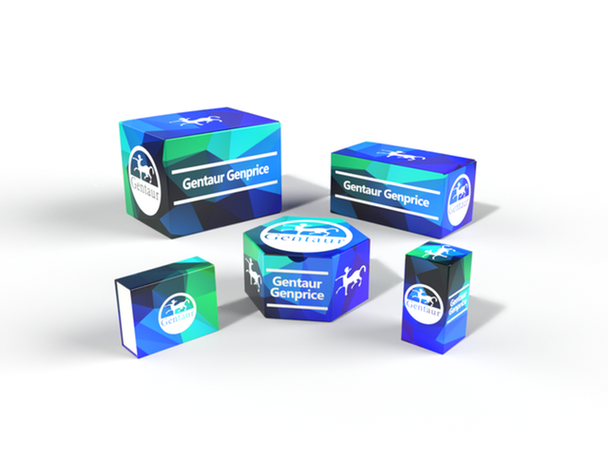Description
ERCC8 Antibody | 27-117 | Gentaur UK, US & Europe Distribution
Host: Rabbit
Reactivity: Human
Homology: N/A
Immunogen: Antibody produced in rabbits immunized with a synthetic peptide corresponding a region of human ERCC8.
Research Area: Transcription
Tested Application: E, WB
Application: ERCC8 antibody can be used for detection of ERCC8 by ELISA at 1:62500. ERCC8 antibody can be used for detection of ERCC8 by western blot at 1 μg/mL, and HRP conjugated secondary antibody should be diluted 1:50, 000 - 100, 000.
Specificiy: N/A
Positive Control 1: Cat. No. 1309 - Human Placenta Lysate
Positive Control 2: N/A
Positive Control 3: N/A
Positive Control 4: N/A
Positive Control 5: N/A
Positive Control 6: N/A
Molecular Weight: 44 kDa
Validation: N/A
Isoform: N/A
Purification: Antibody is purified by peptide affinity chromatography method.
Clonality: Polyclonal
Clone: N/A
Isotype: N/A
Conjugate: Unconjugated
Physical State: Liquid
Buffer: Purified antibody supplied in 1x PBS buffer with 0.09% (w/v) sodium azide and 2% sucrose.
Concentration: batch dependent
Storage Condition: For short periods of storage (days) store at 4˚C. For longer periods of storage, store ERCC8 antibody at -20˚C. As with any antibody avoid repeat freeze-thaw cycles.
Alternate Name: ERCC8, CKN1, CSA, UVSS2
User Note: Optimal dilutions for each application to be determined by the researcher.
BACKGROUND: ERCC8 is a WD repeat protein, which interacts with Cockayne syndrome type B (CSB) protein and with p44 protein, a subunit of the RNA polymerase II transcription factor IIH. Mutations in this gene have been identified in patients with hereditary disease Cockayne syndrome (CS) .This gene encodes a WD repeat protein, which interacts with Cockayne syndrome type B (CSB) protein and with p44 protein, a subunit of the RNA polymerase II transcription factor IIH. Mutations in this gene have been identified in patients with hereditary disease Cockayne syndrome (CS) . CS cells are abnormally sensitive to ultraviolet radiation and are defective in the repair of transcriptionally active genes.










